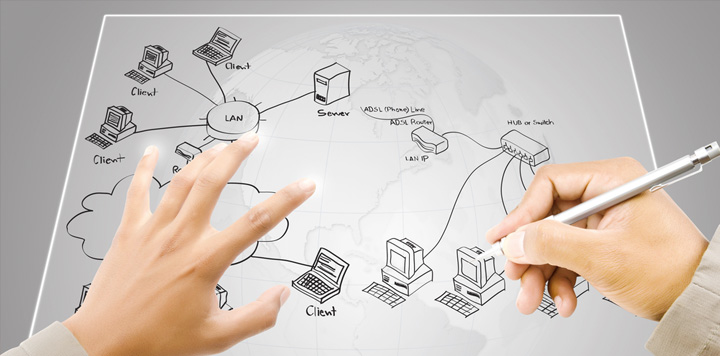Companies are different when it comes to how they manage and value their network. As the company grows, its network grows in size, significance, value, and complexity. With time, this network becomes the main component, helping the businesses run and grow. What is network management? This process refers to monitoring, maintaining, securing, enhancing services, troubleshooting, and other coordinated tasks to improve a company’s network. Network administrators need to understand what’s happening to the network, including past and real-time information on network use, performance, and statuses of devices, apps, and data. Let’s check the importance of this management and its best practices.
Importance of Network Management
Most businesses use technology, including networks, to run their daily operations. Those that have put the right technology and manage their networks enjoy viable and profitable operations. Here are some reasons why network management is essential.
- It creates business leads: Having a well-managed network brings in new clients. Through a better network, you can communicate effectively with clients who bring more business opportunities. It helps businesses connect professionally with new and existing customers.
- It helps businesses identify new practices: With a reliable network, you can determine your business’s best practices and its industry at large. Through your IT infrastructure and management tools, you learn what’s going on and what’s significant to your business.
- New Business Trends: Through advanced technology and reliable connections, you can learn new measures to run your business, enabling you to stay on top of the competition. The outside and inside links help you get and apply new operation methods in advance, before competitors.
- It helps save money: The network team stays updated on new ways and technological trends, helping you save money through their expertise, information, and creative skills in managing the network.
- Accelerated Growth: The network solution provider can offer you services that will scale your growth. They will provide you with tailored and reliable network services that will help grow your business at the slightest chance.
- It offers proactive network management: Instead of your business becoming reactive in-network services, it becomes proactive. Problems will be handled at their initial stages before escalating to crisis levels.
Best Practices for an Effective Network Management
In most cases, the network is the main ingredient in most business operations. This necessity calls for monitoring to ensure everything runs smoothly and issues detected at initial stages. Besides putting monitoring and management tools in place, these tools need checking and maintenance to work effectively. Here are some best practices for effective network management.
Understand your tools
To manage your network well, you first need to understand the devices you are working with for your network. Many tools help in monitoring the servers, routers, security tools, and IP devices. Besides using software to manage the devices, it would be best to have a manual listing of all devices you are using for effective management. You need to understand what’s in your network and their behavior in providing a reliable network.
Configuration and Change Management
It is essential to configure the network tools to adapt to a particular environment to avoid network issues. Wrong configuration, even the minor mistakes, will lead to intermittent downtimes and loss of data. Your network devices need better design and management to enable machines and systems to meet the thresholds of either sending or receiving data from devices and system logs.
Ensure the Right Person Gets Notified of Problems
Most issues happening to networks are caused by human error, requiring IT departments to prioritize and respond to them as they arise. Unfortunately, some problems don’t get reported until they escalate. Through systems or physical reporting, all the emerging issues must be notified on time to the network administrator to avoid getting worse and affecting other operations.
Monitor all Layers
Businesses need to use monitoring systems that accommodate different technologies. Through this layered monitoring, you understand whether the problem arises from the network, routers, servers, bandwidth, or it’s with the hardware and software. Monitoring all layers enables you to have the system’s full visibility and helps monitor your network effectively.
Get Prepared for Expansion
Technology keeps changing daily, and your business must be prepared for new, better devices on its network. Such is essential in a growing business, requiring more employees and more network devices, storage space, network, and WAN bandwidth. Before putting in any network management system, you need to check on the growth forecast and ability to accommodate more network appliances and interfaces.
Network management has several benefits to businesses if done well with the right software. However, to enjoy all these benefits, companies must put the best practices to ensure all systems work and everything goes on as planned.
Follow TechieMag for more articles.
